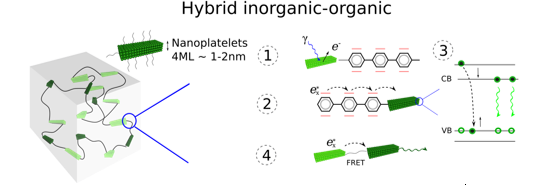RECRUIT grant to newly appointed assistant professor Rosana Martinez Turtos
Rosana M. Turtos has been awarded with a grant amount of 7MDKK from the Novo Nordisk Foundation


Experimental physicist, Rosana M. Turtos has been awarded with a grant amount of 7MDKK from the Novo Nordisk Foundation for her project HAPP: HArnessing Prompt Photon emission in nanocomposite scintillators: a path to on-the-fly-cancer imaging.
Rosana has started as the Principal Investigator (PI) of her new project since August 2021 after concluding two years as a post-doc in the semiconductor group @IFA, where she has been working with Peter Balling and Brian Julsgaard on a novel 3D reusable dosimeter for particle treatment verification. Rosana has a MSc in Nuclear Physics from the Higher institute of technology and applied sciences in Havana, Cuba and received in 2017 her PhD in Physics and Astronomy from the University of Milano-Bicocca with a thesis in the topic of ultrafast scintillating detectors, i.e. materials able to convert ionizing radiation into a flash of optical photons. Her research on prompt photon emission processes in scintillators of next generation was continued as a Research fellow at CERN, Switzerland until 2019, when she decided to move to Denmark as part of her personal life project.
The RECRUIT grant will run actively for 7 years and covers the recruitment of the awardee and a PhD student with starting date in August 2022. The grant is also allowing her to re-focus and stir the investigation towards fast luminescent materials, forming the basis to build a state-of-the-art lab and establish a group in fast-timing radiation-detectors. In parallel to research, Rosana is participating and enjoying teaching in the Experimental Physics 3 course.
“I am looking forward to meet new colleagues at IFA and hopefully expand my network in Denmark”
Why ultrafast photon emission in nanocomposite scintillators:
Ultrafast scintillators with a photon-emission rate of 10 photons emitted per MeV per picosecond at room temperature are candidates to unlock a new imaging regime in time-of-flight positron emission tomography (TOF-PET), which is the most sensitive medical imaging technique used in the clinic for cancer diagnosis. However, such fast performance is limited by the spontaneous radiative decay times of the optical transitions known to luminescent centers. HAPP will be investigating a new emerging class of photon emitters, i.e 2D semiconductor nanoparticles, and study the different energy conversion and transfer mechanisms that could enable their efficient implementation as particle detectors with sub-100ps time resolution. Some of the fundamental processes under study are depicted in the following figure and they appear numbered from 1 to 4.
________________________________________________________________________________________
For further information, please contact
Experimental Physicist Rosana Martinez Turtos
Department of Physics and Astronomy
Aarhus University, Denmark
ro.turtos@phys.au.dk
